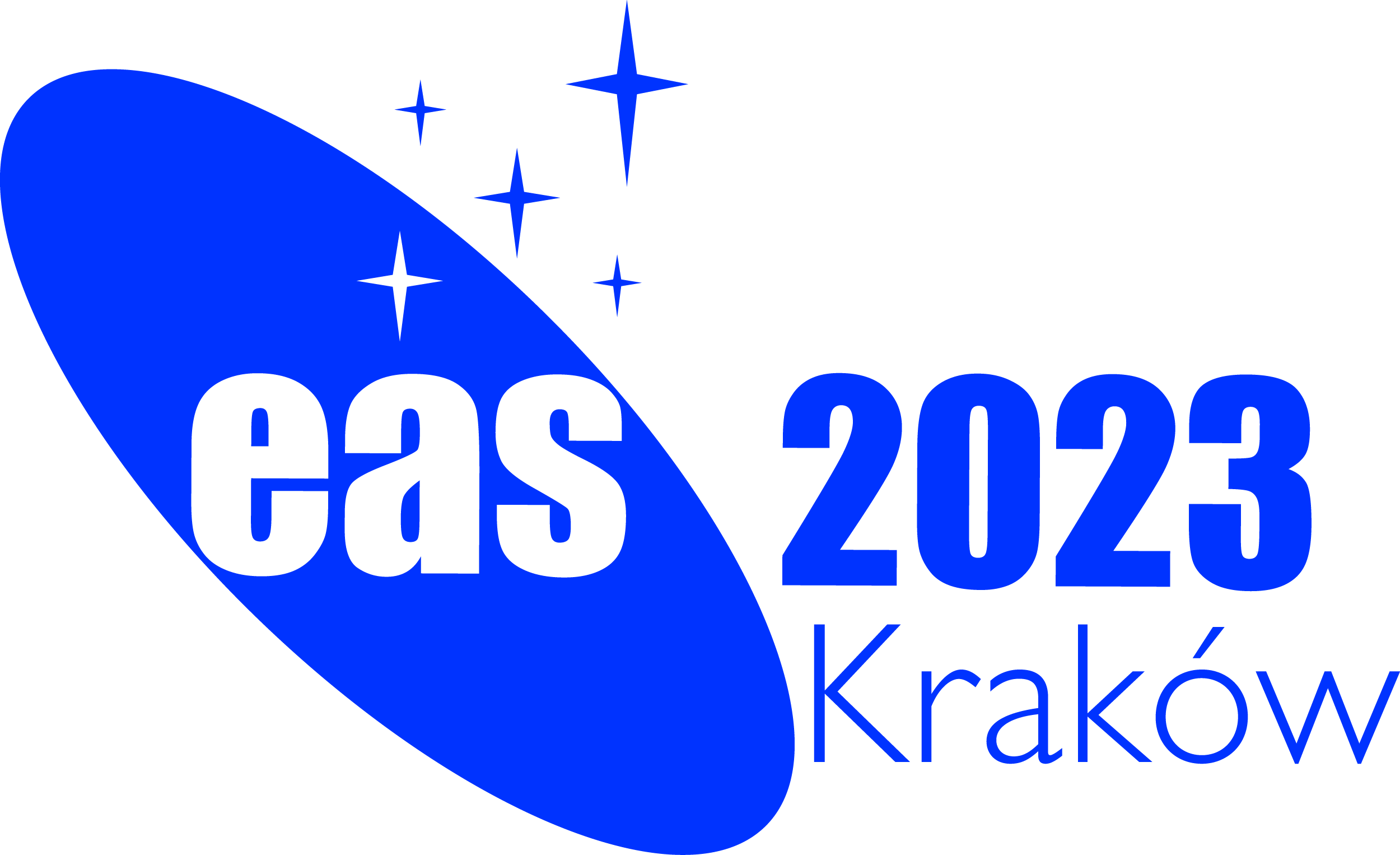
|
Special Session SS28
14 July 2023
Understanding the connection between nuclear star clusters, black holes and galaxy evolution
In the last few decades, the astrophysics community has made a big effort to understand galaxy formation and evolution. The recent progress has shed light on the combination of internal and external processes, such as secular evolution and galaxy mergers, that have led to the fascinating diversity of stellar structures in galaxies. The structural diversity is also prominent in the central regions of galaxies, where a variety of distinct stellar systems form, such as nuclear star clusters (NSC) and nuclear disks and rings, which often coexist with massive black holes (MBHs). These structures are important tracers of the dynamical state and overall evolution of the host galaxy. Studying them reveals not only their formation and growth but also the mechanisms funneling stars and gas to the center, which can lead to the seeding and growth of MBHs and to the appearance of active galactic nuclei (AGNs). The tight connection of galactic nuclei with large-scale processes and MBHs makes them key to understanding galaxy evolution in general. Among these tracers, NSCs, with sizes of a few parsecs and masses of up to a few times 107 solar masses, are the densest stellar systems in the universe. Most galaxies with stellar masses between 108 and 1010 solar masses host NSCs, which show a clear evolutionary connection with their host galaxy through various scaling relations. NSCs can form via two different channels: star-cluster inspiral to the center due to dynamical friction and in-situ star formation at the center of a galaxy. Several observational studies have suggested that both mechanisms contribute to the formation and growth of NSCs, while there is no overall agreement on their relative contribution. The evolution of NSCs is also intimately connected to MBHs. Both share mass scaling relations with their host galaxy, indicating that the formation of both is driven by important processes involving the full-galaxy evolution. MBHs may form in NSCs from merging lower-mass black holes, while the same large-scale processes (e.g., rejuvenation after galaxy mergers) may play a key role in both triggering nuclear starbursts and feeding MBHs. Integral-field spectroscopy coupled with adaptive optics has allowed high-quality studies of the links between galactic nuclei, MBHs and host galaxy evolution. Meanwhile high-resolution observations with JWST are allowing an unprecedented view of stellar structures at such a small scale. However, all mentioned scientific aspects need to be connected together in the comprehensive picture of galaxy evolution. The goal of this Special Session is to gather both theorists and observers in order to discuss:
Comparisons between observations and simulations as well as studies that consider both stellar and gas properties, will be among the main discussion themes. Finally, we aim at getting the community prepared for the upcoming ELT, which will allow us to spatially resolve nuclear properties for a large number of galaxies. Programme
Invited speakers
Scientific organisers
Chair: Francesca Pinna (MPIA, Germany) Co-chairs: Renuka Pechetti (LJMU, UK), Alessandra Mastrobuono-Battisti (OBSPM, France) Additional SOC members: Torsten Böker (ESA, United States), Silvia Martocchia (University of Heidelberg, Germany), Nadine Neumayer (MPIA, Germany), Nikolay Kacharov (AIP, Germany), Anja Feldmeier-Krause (MPIA, Germany) Contact pinna @ mpia.de, r.pechetti @ ljmu.ac.uk, alessandra.mastrobuono-battisti @ obspm.fr Updated on Fri Feb 24 13:59:31 CET 2023
|
||||||||||||
|
European Astronomical Society |
|||||||||||||
 A power cut will shut down all EAS services on Tuesday, 10 January 2017 starting at 7:30 CET.
A power cut will shut down all EAS services on Tuesday, 10 January 2017 starting at 7:30 CET.


